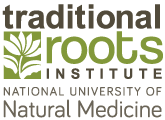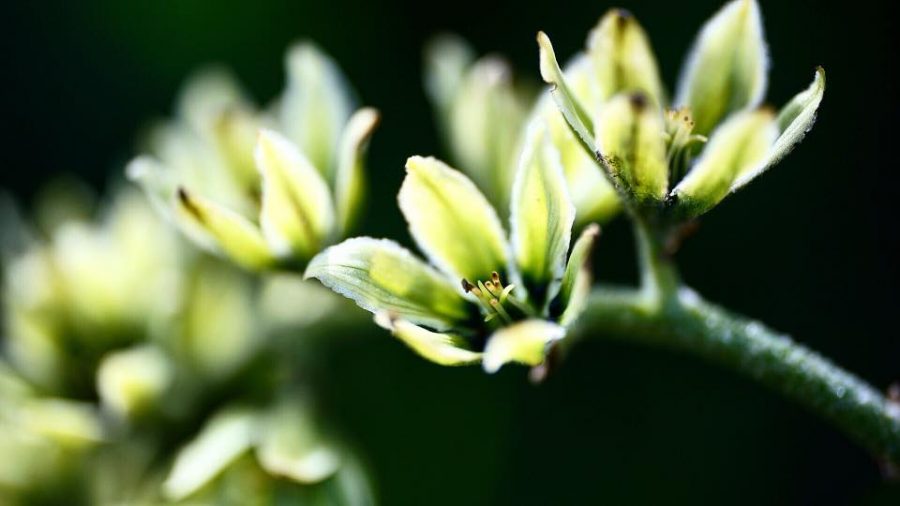Paul Bergner
New Insights into Commonplace and Undervalued Herbs
Sometimes our most commonplace herbs, often growing abundantly around us, are overlooked in favor of newer, exotic or imported herbs or preparations. But the commonplace “boring” herbs endure through millennia because they are reliable, potent and versatile in their applications. Recent scientific research gives insights into the mechanisms of some traditional uses and adds knowledge about possible expanded applications. We will cover recent research and traditional uses for Urtica, Matricaria, Althaea, Allium sativum, Plantago, Calendula and Hypericum.
Red, White, Black and Blue: Differentiating the Cohoshes
Actaea and Caulophyllum species have been used in North American medicine for centuries, and were mainstay herbs in the medical practice of all schools medicine. Baneberry and black cohosh of the Actaea genus are frequently viewed today as different medicines even though historically they have been used interchangeably. And while Actaea species and Caulophyllum are not related through constituents or botany, they have many properties in common, and have frequently been used historically as a pair in neurological, respiratory, gynecological and obstetrical applications. We will review the science and the traditions of these three powerful herbs.
Chanchal Cabrera
Cancer Materia Medica: Treatment Planning and the Cytotoxic Herbs (Parts I and II)
Many herbs can be used to support a person with cancer – well researched options include turmeric, green tea, medicinal mushrooms and adaptogens. However, less frequently used are the cytotoxic herbs that target cancer cells directly. These are often drop-dose herbs with significant risks and side effects, but are also some our most useful materia medica in treating cancer. Knowing when and how to use these herbs, understanding their complex phyto-pharmacology and risk profiles, and their constitutional indications can significantly improve clinical outcomes. Specific discussion will include herb-drug interactions and combining herbs safely with chemotherapy. Botanical remedies discussed include: Artemisia annua, Podophylum peltatum, Taxus brevifolia, Asimina triloba, Camptotheca acuminata, Phytolacca sp., Chelidonium majus and Thuja occidentalis.
Shinrin Yoku: The Japanese Art and Science of Forest Bathing
Why do we give flowers for celebrations and special events? Why do we pay premium prices to have room with a view? Why do we cultivate houseplants when we live in apartments and why do we have planter boxes in our malls and public places? Whether we know it or not, these plants are all emitting aromatic molecules, pumping out specific chemistry that can help us heal. In Japan the practice of contemplative waking in pine forests is considered a valuable medicine and your doctor can prescribe you time off work for forest bathing practices. In this exciting experiential session we will explore the science and research behind the practice as well as going outside and experiencing the healing power of trees for ourselves.
Sussanna Czeranko
Reclaiming Lost Herbal Treasures: Surprising Finds in Kneipp’s Apotheca
In 1896, Benedict Lust had opened up his first business selling health products, including a full line of Father Sebastian Kneipp herbs. Kneipp’s apotheca became the foundation for the early naturopaths and continue to form the main elements of an herbal apothecary today. Lust had studied with Kneipp and used the entire Kneipp apotheca, which consisted of less than 50 common herbs all of which were classified as non-toxic. Over the next two decades, Lust enriched and expanded the Kneippian apotheca to include more than 175 herbs — with uses that may surprise the modern practitioner.
This presentation will review the historical literature found in Lust’s publications between 1900 and 1923 and we will examine unique and unfamiliar applications for the remedies commonly used during that time. Lust’s herbal Materia Medica is intriguing because of the specific uses indicated for each herb. For example, in a 1900 article Lust lists chamomile, chickweed, coltsfoot and elder flowers for four different presentations of colds. He names various herbs presenting concise indications for their use. His insights into herbal practice from more than 115 years ago have significant value for today’s practitioners.
Alexis Durham
The Art of Herbal Formulation
Formulation is the artistry of herbalism: it combines everything you know about materia medica and research with gut instinct to create unique formulae for each patient. But formulating also can be daunting, trying to cover all bases while offering the minimal intervention to let the body restore itself. This class will look at simples, pairs and structures for creating multi-herb formulae. We’ll discuss ways to improve your formulations and common pitfalls.
Herbs for the Heart and Emotional Healing
Historically, the heart has been regarded as a source of wisdom, spiritual insight, courage, thought and emotion. It wasn’t until the 1700s that humans began relegating this spiritual center to the role of a machine, whose function was only that of pumping blood. Modern research reminds us that the heart is an incredibly complex, dynamic and intelligent organ, communicating with and influencing the brain and the rest of the body. This class will cover the traditional uses, mythology and lore of several heart-centered herbal allies, with additional emphasis on dietary and lifestyle changes that can support healing on physical, emotional and spiritual levels.
Glen Nagel
Mastering the Menstruum in Herbal Extracts
A menstruum is the liquid mixture used to extract herbal products. Herbalists and medicine makers always have lively discussions about using which concentrations and combinations of alcohol, glycerin and water makes the best herbal extracts. We will discuss the various menstruum options and which maximize different herbal constituents. The class offers answers and practical, take-home advice on how to making the best medicine for your purposes.
The New Herbal Bitters: New Uses for the Most Ancient of Tastes
Herbalists, naturopaths and traditional healers have all understood the power of bitters to support digestion, ease bloating and gas. Now, new models and research point to the possibility that bitters have a much wider role in health and disease. Could chronic thyroid disease, heart disease, metabolic disease and diabetes be a bitter deficiency? Is our aversion to bitter foods and herbs hurting our health? This talk covers the emerging theories and describes a new world of activity for the most ancient of tastes.
Tania Neubauer
Organoleptic Herbal Science in the Field
How do herbs differ in their taste, actions and energetics when eaten fresh, prepared as a tea or prepared as a tincture? Using the Min Zidell Healing Garden as an experiential laboratory, we will taste herbs in their fresh, tea and tincture forms and discuss when they might be best used in their different forms. We will experience first hand some of the herbal actions and energetics from tasting each form of the herb.
Herbalism and the Therapeutic Order: Clinical Case Panel Discussion on Fatigue and Thyroid Disease
The therapeutic order describes a strategy, fundamental to naturopathic medicine and applicable across herbal disciplines, of using the gentlest methods to support the foundations of health in all patients, before simply treating the disease. A case study of a patient with fatigue and thyroid disease will be reviewed, with three practitioners giving their views on how to approach the case using the therapeutic order as a strategy. Participants will also analyze the case using the same strategy.
Jessica Ring
Healing Applications of Hydrosols
Hydrosols are their own class of herbal medicine with long-standing use stretching back thousands of years. Like many beautiful herbal traditions, the use of hydrosols was buried by the wave of new pharmaceuticals, beliefs and monoculture practices carried in with the Industrial Revolution.
This class will cover the long-standing, resurgent tradition of using the aromatic waters of distillation, also known as hydrosols, in various medicinal and clinical contexts. We will discuss the differences between hydrosols and essential oils, products which emerge from the still simultaneously, but have their own unique healing properties. Sustainable, artisanal hydrosols from small-scale distillers will be smelled, tasted, added to medicinal preparations, and applied to the skin. As we explore these gentle healing waters we will discuss both their chemistry and healing properties as well as their inherent strengths and weaknesses. Various methods of applications, such as mists, poultices, eye drops and internal use will be considered. The goal of this class is to encourage the use of hydrosols in practice for their gentle yet effective nature, their low energy footprint, and their subtle ability to shift the emotions. Tips for quality discernment, sourcing and storage will be offered.
Jillian Stansbury
Restoring Gatrointestinal Motility
Impaired intestinal motility leads to dysbiosis and predisposes to SIBO. When motility impairment is severe, gastroparesis may result, in turn leading to malnutrition, frequent nausea and vomiting. Impaired motility can also lead to osteoporosis, anemia and other complications. This presentation will discuss numerous botanical options for restoring impaired gastric and intestinal motility, and will show why acid-blocking drugs may contribute to motility disorders. We also will also detail how the hormones motilin and ghrelin – the hunger hormone – may offer some benefits.
Nicole Telkes
Plant Provings
Traditional, holistic systems of medicine understand that in order to offer remedies and true paths to healing we must be able to not only know their actions, but their qualities and what areas of the body they affect. Today, evidence-based medicine values data in the form of clinical trials. We will be gathering data in the form of organoleptic learning, finding patterns through sipping tea and doing a plant proving. Plant sits often are used to help understand the spirit of the plant, but in this workshop we will dissect the physiological workings of a plant we ingest. We will look at flavors, qualities and how sort through and define actions in the body.
Oceans of Emotion: Addressing the Roots of Imbalance
When life keeps throwing us curve balls, how do we keep our clients – and ourselves – emotionally balanced? How do we as clinicians address the real and sometimes disproportionate effects of trauma on our client communities if we are not trained to offer talk therapy? Especially given that some physical signs of illness and disease can be traced back to emotional – or even spiritual – roots? Pulling from traditional practices including Curanderismo and Ayurveda, this class will cover traditional and modern practices using herbs, ritual and self care for mental, spiritual and physical health. We will discuss story medicine, ritual and unique herbal remedies for cleansing, as well as ways to incorporate plants on various levels of healing for emotional and spiritual health. We also will talk about single plants and pairs that are used to help balance emotions as whole plants, and essential oils, and flower essences.
Herbalism as Resistance
The history of herbal medicine is founded in rooted rebels whose interactions with plants changed the way we experience nature and our own health. What herbs inspired the herbalists who’ve gone on to inspire us? How did they use those herbs in clinical practice? Starting in Culpeper’s time and moving to our modern times, we will look at how these inspirational figures used herbs to create a more vibrant community of resistance – and how they are still fighting to keep herbal medicine the people’s medicine.


